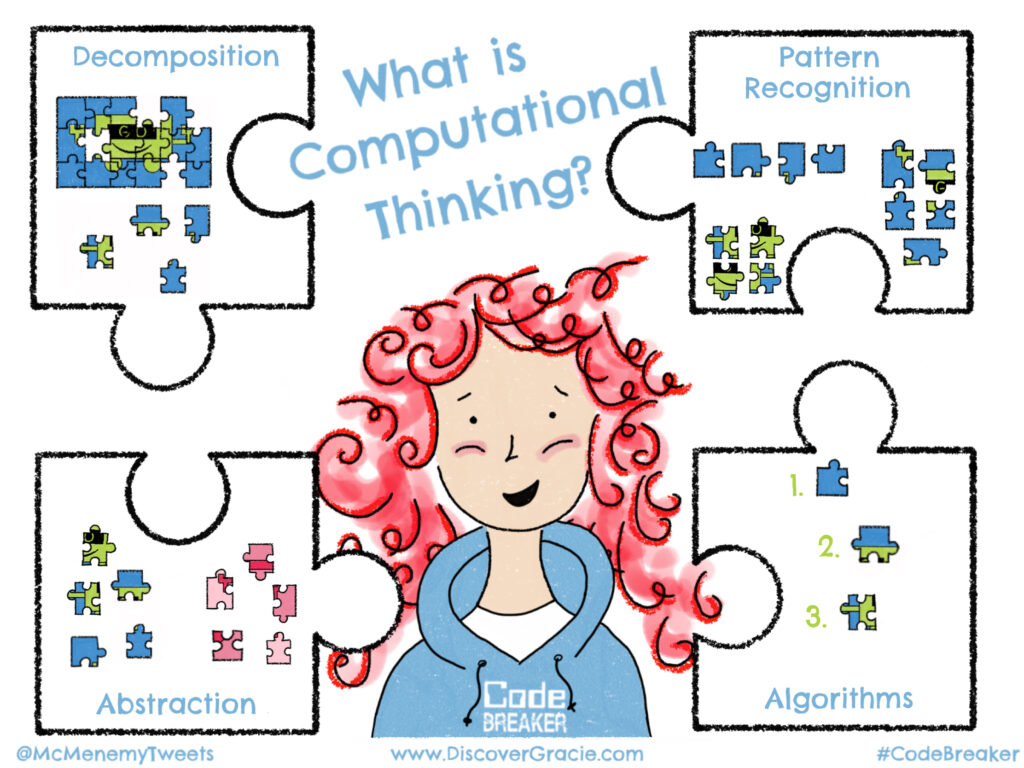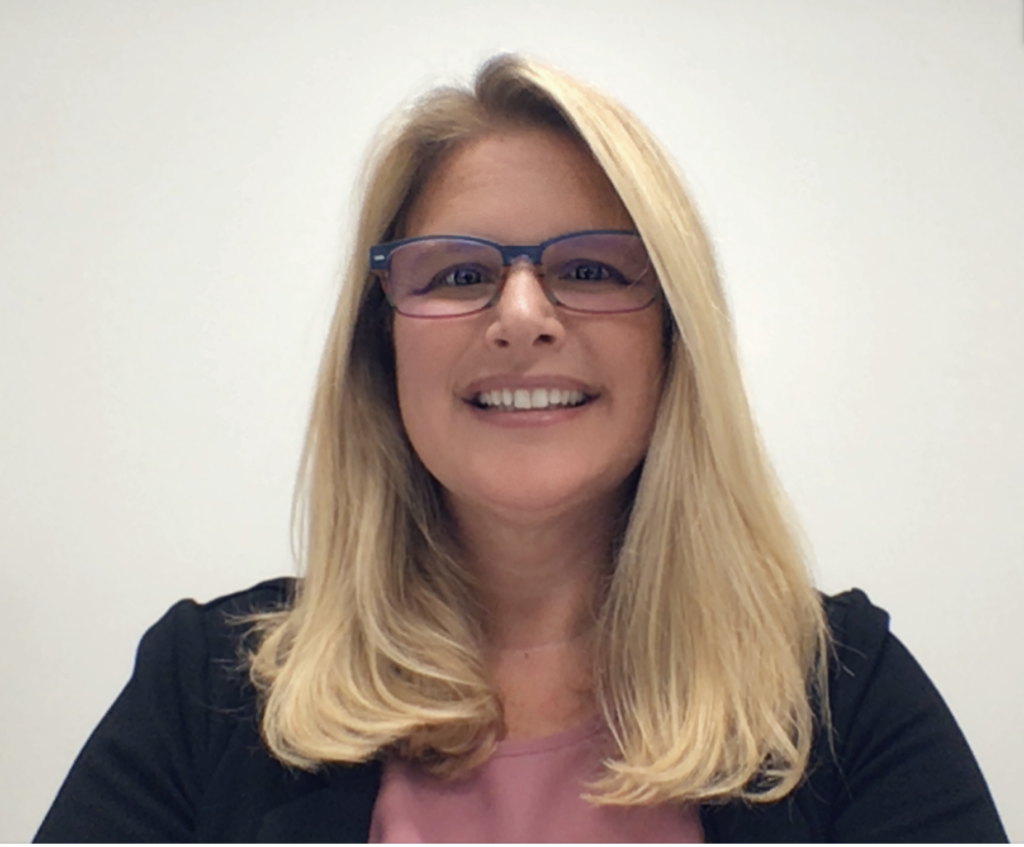
Code Breaker Guest Blog
by Laurie Guyon
Teaching complex vocabulary to students is essential in education. It plays a crucial role in developing literacy skills, which students will use throughout their academic and professional careers. With a rich vocabulary, students can effectively communicate their ideas, understand more challenging texts, and increase their confidence in expressing themselves.
When teaching vocabulary in our classrooms, we often look to break down terminology into smaller parts or showcase the words’ meaning in a visual context. It creates connections and fosters long-term memory of the language. Creativity ensures students understand the definitions of new words. Plus, it’s often fun and engaging.
In my current role, I offer professional learning workshops and webinars on computer science, digital literacy, and integrating technology effectively and appropriately in our classrooms. Many educators come into my training with the notion that computational thinking and computer science principles are something separate from what we do to teach English, math, science, or social studies. But, once we break down the key terms, the connections to what is already taught in the classroom start to emerge.
Computer science’s essential vocabulary includes decomposition, pattern recognition, abstraction, and algorithms. When I present these terms to educators, we often define the words differently based on our lens. We want to sharpen that focus when applying them to computer science. Understanding these terms is critical when using computational thinking strategies. When I first started hosting workshops, I realized I needed a way to break down the vocabulary to create a common language as we move to engage in computer science principles in our classrooms.
While looking for ways to describe and define these terms, I found an image Daphne McMenemy had created around her Gracie books. I was already familiar with the books as I have them in my library and love sharing them with educators and students. The books are a fantastic way to engage in computer science and digital literacy conversations.
The image Daphne created around computational thinking showcases the four keywords using simple puzzle pieces. This visual demonstrates those vocabulary connections that are often difficult to explain. As a result, I could create engaging ways to help build a shared vocabulary for us in our workshops and, in turn, with students in our classrooms.
First, I like to start by reading the book and using the video to discuss these critical terms. Next, I want to make sure our learners have time to process what they learn and have time to explore. Then, I want to assess how our learners are doing during any lesson. To do so, I created a way to get the information to my audience so they could interact with the content and build those connections.
I used interactive features in Nearpod and embedded them into my workshops and webinars. Nearpod is a platform that helps me see how my learners are doing with the content I’m presenting. The interactive activities allow my students to explore, create, collaborate, and engage with the content. The amount of formative assessment gathered within these activities is impressive.
For a quick check-in after discussing these terms, I created a simple drag-and-drop activity in Nearpod. I blocked out the vocabulary words on the Gracie image and brought it into Nearpod’s Drag and Drop feature. You can interact with this activity by clicking this link. You will see the words in the word bank on the left that can be dragged to the blue boxes on the image.
There are other ways to engage with this vocabulary and Gracie in Nearpod. For example, before students showcase their understanding, you can use the video and embed questions as they engage with the content. You can try that out here. This video can be done self-paced or whole group depending on whether this is an introduction or a review lesson. Either way, the embedded questions will help students showcase what they know and wonder about and give you accurate feedback as to your next steps to ensure your audience understands the critical vocabulary. Since the video is only about one minute long, it won’t take very long to get your students to start engaging with the vocabulary you are working on with the image.
The Gracie Computational Thinking image can be used to see how well your students understand the computational thinking concepts at any point in your lesson or workshop. Using the Draw It features in Nearpod, your students can design their own creations. You can use the video as a reference to support student learning. Try it out here. Block out the words as we did in the drag-and-drop activity in the Draw it feature to have your students use text boxes to label the images.
Finally, you can engage your students in discussions based on this image within a Collaborate board. These interactive boards allow students to communicate, listen, and engage with other students. You have options for what and how students can respond on this board as they engage with the image. These conversations and what they put on this Collaborate board will deepen their understanding of these complex terms. Use this in small group work, independent work time, or even whole groups to get your students thinking about computational thinking concepts.
All in all, the Gracie books and the computational thinking image that Daphne made are excellent resources to support our understanding of the critical concepts of computational thinking. We can all learn about computer science using these resources and the others on Gracie’s website.
You can find all of the Gracie Nearpod Activities HERE.
For more information about the Gracie books, visit DiscoverGracie.com.
To learn more about Nearpod, visit Laurie’s Nearpod library
.

Laurie Guyon is the Coordinator for Model Schools at WSWHE BOCES in Saratoga Springs, New York. She is the Capital Region Director and a trainer for NYSCATE. Laurie won the ‘Best Overall Implementation of Technology’ award from Tech and Learning in Boston, and the Global Impactor Award from the Digital Citizenship Institute in 2022. She is a chapter co-author of Professional Development is a Plan, Not a Fix in the book What teacher educators should have learned from 2020. Laurie was named CoSN’s NextGen: Emerging EdTech Leaders in 2020 and earned the Spotlight Award at BOCES. Laurie was part of the NYSED authoring committee for the Computer Science and Digital Fluency standards and is a member of the NYSED Content Advisory Panel for those standards. She is an ISTE Certified Educator and Trainer, Google Cloud Certified, Google Certified Educator, and Trainer. Laurie is an ambassador with Common Sense, Buncee, Imagi, iRobot, Seesaw, Book Creator, Genially, Wakelet, 3D Bear, Osmo, and IORAD. She is a Nearpod PioNear, Sphero Hero, Kami Hero, and Hapara Champion. Laurie is an adjunct professor for SUNY Plattsburgh, where she teaches Digital Age Learning in the CAS SBL program.
